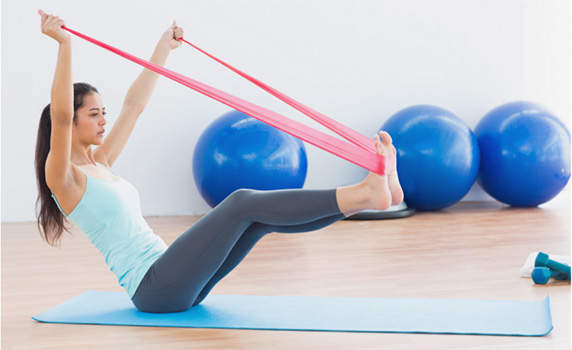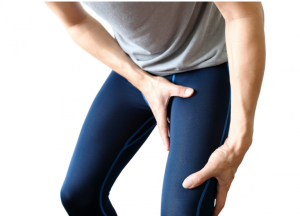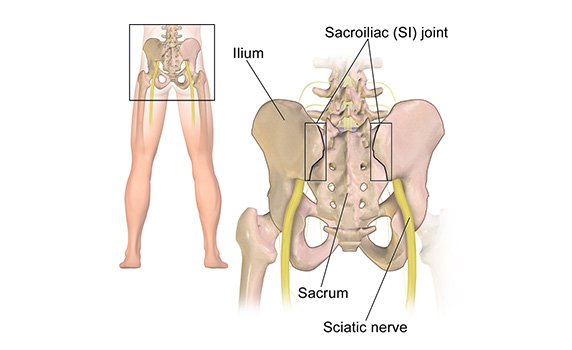Overview
Integrative physical therapists help improve the way you move by providing a total-body evaluation looking at the musculoskeletal, neurologic and somatovisceral systems to deliver whole-person care.
Principles
Techniques:
- Myofascial release
- Visceral manipulation techniques
- Joint mobilization
- Therapeutic exercises
- Postural strengthening
- Pain education
Conditions
- Chronic pain
- Numbness, tingling, radicular symptoms
- Pelvic pain, SIJ dysfunction
- Sciatica
- Sports injury
- Back and neck pain
- Post-operative rehabilitation
- Upper and lower extremity pain or injury
Services
Myofascial Release
- Therapist will assess for areas of restrictions which may or may not be in the same region of symptoms and apply these gentle forces until the tissue relaxes.
- A gentle treatment technique where light forces are applied to the tissue with the intention of releasing restrictions of the myofascia, decreases pain, improves range of motion.
Visceral Manipulation/Mobilization
- Light touch manual therapy technique to help facilitate the intrinsic movement of the organ as well as decrease any adhesions in the fascial connections of the organ
- Can be used to help mobilize scar tissue following abdominal surgeries
- Decreases referred pain
Therapeutic Exercises
- Your physical therapist will design a specific home exercise program tailored to your body’s needs
- Often utilize body weight and/or resistance bands
- Can be prescribed to help strengthen weakened muscles, improve flexibility and improve your movement pattern
- Overall goal is to help improve your posture and your ability to perform activities of daily living while preventing further injury

Sciatica
- Sciatica can be a catch-all phrase referring to pain traveling down the back of your leg.
- Your physical therapist will help evaluate your symptoms to determine where the pain is coming from. It could be coming from your low back, sacroiliac joint, or could be related to your piriformis muscle restricting your sciatic nerve mobility. There is also potential that the pain could be referred pain from the viscera/abdominal cavity.
- Treatment for sciatica will be driven by what your physical therapist finds during the evaluation and individualized to your specific body and needs.

Sacroiliac Pain
- The pelvis consists of two bones that come together forming a bowl-like shape that attach in the front at the pubic symphysis and in the back at the sacrum.
- Sometimes one half of the bowl will rotate, which may lead to pain or dysfunction.
- Your physical therapist can help identify factors leading to this rotation as well as apply manual techniques to help your pelvis return to neutral alignment.

Pelvic Pain
- Within the pelvis sits your pelvic organs, which are supported by layers of fascia, as well as several muscles that assist with bowel, bladder and sexual function.
- Sometimes there can be a restriction or weakness in any part of the system, contributing to pain, and/or urinary, bowel, or sexual dysfunction.
- Your physical therapist can help to identify the components leading to this dysfunction, apply manual techniques, and train you in proper breathing, movement, and exercises to help you restore optimal pelvic health and function.
Pain Explained
Pain is the brain’s protective response to perceived danger in the body, whether or not danger is actually present. Pain is an output mechanism from the brain. Pain is often associated with an emotion and can even be triggered by the memory associated with the pain.
Chronic Pain
- Persistent pain lasting more than 12 weeks
- Amount of pain does not necessarily correlate with amount of tissue damage
- The brain’s normal response to protect itself from a perceived danger
- Fear, memory, and context of the pain are very important
Acute Pain
- Initial 4-6 weeks following an injury
- Correlates with tissue “damage” and acute inflammation
- Responds to “RICE” treatment of rest, ice, compression, elevation
(Reference: Butler DS, Moseley GL. Explain Pain. Adelaide, Australia. Noigroup Publications. 2003.)
Why Choose Us?
What Is Physical Therapy?
Evaluation and treatment to help improve the way you move, improve function, and decrease pain through the use of hands-on techniques, patient education and therapeutic exercises.
Can Physical Therapy Help Me?
Yes! We treat conditions affecting the whole body orthopedically and neurologically and we treat patients of all ages. Physical therapy can help you prepare for surgery, rehabilitate post operatively, prevent future injuries, and recover from chronic or persistent pain.
But I’ve Tried Other Physical Therapy Before and It Didn’t Help.
As part of the only academic medical center in Orange County, we specialize in helping patients get better who perhaps didn’t find as much relief from traditional techniques. We also work alongside with the integrative health team at SSIHI and can collaborate with other practitioners such as naturopaths, osteopaths, massage therapists and acupuncturists to help you reach your goals.
Why Is a Holistic Approach Useful?
With pain and injury, the musculoskeletal and nervous systems are in a protective state. Taking a holistic approach allows us to really evaluate what your body is protecting and address it. The goal is to restore homeostasis which means to restore balance in your nervous system and ultimately improve your function.
What Does It Mean to Work on the Viscera?
Visceral manipulation or mobilization is a light touch manual therapy technique during which we work on the fascial connections surrounding the organ and help facilitate the organ’s natural movement within the body. This may be an important piece to helping your body heal and to restore balance within the nervous system.
Our Team


Price
Susan Samueli Integrative Health Institute accepts a variety of insurance plans or private pay. Your visit may be subject to copay and deductible. Please contact us at 949.824.7000 for more information.
Research
Espí-López GV, Rodríguez-Blanco C, Oliva-Pascual-Vaca A, Benítez-Martínez JC, Lluch E, Falla D. Effect of manual therapy techniques on headache disability in patients with tension-type headache. Randomized controlled trial. Eur J Phys Rehabil Med. 2014 Dec;50(6):641-7. Epub 2014 Apr 30. PMID: 24785463.
Cook, C. (2007). Orthopedic manual therapy: an evidence based approach / Chad Cook. Pearson/Prentice Hall.
Butler DS, Moseley GL. Explain Pain. Adelaide, Australia. Noigroup Publications. 2003.